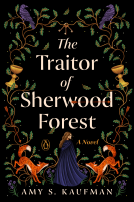
Chasing Cynthiana
My Search for America's Native Wines
by Lynn Hamilton
This title was previously available on NetGalley and is now archived.
Send NetGalley books directly to your Kindle or Kindle app
1
To read on a Kindle or Kindle app, please add kindle@netgalley.com as an approved email address to receive files in your Amazon account. Click here for step-by-step instructions.
2
Also find your Kindle email address within your Amazon account, and enter it here.
Pub Date Nov 01 2024 | Archive Date Oct 31 2024
University of Nebraska Press | Potomac Books
Talking about this book? Use #ChasingCynthiana #NetGalley. More hashtag tips!
Description
In Chasing Cynthiana Lynn Hamilton reveals that Americans have far more wine options than they realize. One of those options, made from Norton grapes, has a rich but mostly forgotten history, entwined with the pioneering of America’s western states. But Norton (also known as Cynthiana) is often pushed aside to make way for wine varietals from France and Italy.
Is the wine drinker’s preference for certain grapes rooted in necessity or tradition? How will climate change alter America’s traditional wine regions? Hamilton considers these and other questions as she journeys through some of America’s hidden pockets of wine in this exploration of winemaking’s history in the United States. Infused with humor and whimsy, Chasing Cynthiana challenges the wine industry’s snobbery as well as its complacency when it comes to American vintages.
Advance Praise
“Chasing Cynthiana details the history of the elusive Norton/Cynthiana grape, a native American fruit whose story was largely obliterated by the popularity of California wine. . . . Lynn Hamilton’s book is a must-read for wine lovers and students of American history. You will wish you had a glass of Cynthiana wine in hand while reading this intriguing narrative.”—Amanda Bochain, chef and food writer
“Chasing Cynthiana opened my eyes to the lost world of American wines. Lynn Hamilton connects this lost history to the ways climate change imperils traditional winemaking today. She also takes a close look at the winemakers who have been on the frontlines of the climate crisis for decades. . . . This book offers us a roadmap to a sustainable future for winemakers and drinkers alike. (And poses the important question: Is mead finally making a comeback?) Chasing Cynthiana is a powerful, informative read for anyone who underestimates the labor, time, and centuries of knowledge that go into a bottle of wine—or mistakenly think the best ones must have ‘Napa’ or ‘Bordeaux’ on the label.”—Alexis Ancel, sustainable food systems consultant
Available Editions
| EDITION | Hardcover |
| ISBN | 9781640126176 |
| PRICE | $29.95 (USD) |
| PAGES | 208 |
Available on NetGalley
Featured Reviews
This enlightening book takes readers on a captivating journey through the world of American wines, exploring why our local varieties are not only exceptional but perhaps even better than many international options—if only they were given the chance to shine. With its insightful analysis and engaging prose, the author effectively challenges preconceived notions about wine quality and regional pride.
One of the book’s strengths is its thorough exploration of the unique terroirs across the United States. It highlights the diverse climates, soils, and grape varieties that contribute to the rich tapestry of American winemaking. This not only deepens your appreciation for local wines but also encourages readers to explore the hidden gems available in their own backyards.
The author adeptly addresses the curious phenomenon of why local pride hasn’t quite kept pace with the global wine landscape. The book delves into the complexities of the wine industry and the societal factors that influence our perceptions of quality. It’s a thought-provoking read that encourages us to reconsider what we choose to drink and why we might overlook the remarkable offerings produced right here at home.
What I found particularly refreshing is the author’s passionate advocacy for local wines. With clear guidance on how to discover and appreciate these wines, the book serves as an invitation for readers to embark on their own tasting adventures. It’s an inspiring reminder that great wine doesn’t have to come from far-flung vineyards—it can be found just down the road.
Whether you’re a seasoned wine connoisseur or someone just beginning to explore the world of wine, this book is a must-read. It not only highlights the incredible potential of America’s local wines but also instills a sense of pride in the craftsmanship and creativity happening across the country. After reading this book, you’ll likely find yourself eager to support local wineries and discover the exceptional wines waiting to be uncorked.
 Ashleigh H, Reviewer
Ashleigh H, Reviewer
I LOVED, LOVED, LOVED this book! It mirrors the journey my husband and I are on in drinking wine from every state in the union. While we've only tried this particular varietal once, from a winery in Alabama, this book has caused us to bump this varietal up the priority ladder when choosing between different grapes.
The author did such an amazing job bringing to life the history of this piece of America, and I can't wait to see what she writes about next!
Cheers!


















